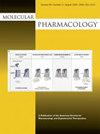The Growing Class of Novel RNAi Therapeutics
IF 3
3区 医学
Q2 PHARMACOLOGY & PHARMACY
引用次数: 0
Abstract
The clinical use of RNA interference (RNAi) molecular mechanisms has introduced a novel, growing class of RNA therapeutics capable of treating diseases by controlling target gene expression at the posttranscriptional level. With the newly approved nedosiran (Rivfloza{trade mark, serif}), there are now six RNAi-based therapeutics approved by the United States Food and Drug Administration (FDA). Interestingly, five of the six FDA-approved small interfering RNA (siRNA) therapeutics [patisiran (Onpattro{trade mark, serif}), lumasiran (Oxlumo{trade mark, serif}), inclisiran (Leqvio{trade mark, serif}), vutrisiran (Amvuttra{trade mark, serif}), and nedosiran] were revealed to act on the 3'-untranslated regions of target mRNAs, instead of coding sequences, thereby following the common mechanistic action of genome-derived microRNAs (miRNA). Furthermore, three of the FDA-approved siRNA therapeutics [patisiran, givosiran (Givlaari{trade mark, serif}), and nedosiran] induce target mRNA degradation or cleavage via near-complete rather than complete base-pair complementarity. These features along with previous findings confound the currently held characteristics to distinguish siRNAs and miRNAs or biosimilars, of which all converge in the RNAi regulatory pathway action. Herein, we discuss the RNAi mechanism of action and current criteria for distinguishing between miRNAs and siRNAs while summarizing the common and unique chemistry and molecular pharmacology of the six FDA-approved siRNA therapeutics. The term "RNAi" therapeutics, as used previously, provides a coherently unified nomenclature for broader RNAi forms as well as the growing number of therapeutic siRNAs and miRNAs or biosimilars that best aligns with current pharmacological nomenclature by mechanism of action.不断发展的新型 RNAi 疗法
RNA 干扰(RNAi)分子机制的临床应用引入了一类新的、不断发展的 RNA 疗法,该疗法能够通过在转录后水平控制目标基因的表达来治疗疾病。加上新近获批的奈多西兰(Rivfloza{商标,衬线}),目前美国食品和药物管理局(FDA)共批准了六种基于 RNAi 的疗法。有趣的是,FDA 批准的六种小干扰 RNA(siRNA)疗法中,有五种[patisiran(Onpattro{商标,衬线})、lumasiran(Oxlumo{商标,衬线})、inclisiran(Leqvio{商标,衬线})、vutrisiran(Amvloza{商标,衬线})和 vutrisiran(Amvloza{商标,衬线})、vutrisiran (Amvuttra{trade mark, serif})和 nedosiran]被发现作用于目标 mRNA 的 3'- 非翻译区,而不是编码序列,从而遵循了基因组衍生的微 RNA(miRNA)的共同作用机制。此外,FDA 批准的三种 siRNA 治疗药物[patisiran、givosiran(Givlaari{商标,衬线})和 nedosiran]通过近乎完全的碱基对互补而不是完全的碱基对互补来诱导靶 mRNA 降解或裂解。这些特点以及以前的研究结果混淆了目前区分 siRNA 和 miRNA 或生物仿制药的特征,因为它们在 RNAi 调控途径中的作用是一致的。在此,我们讨论了 RNAi 的作用机制以及目前区分 miRNA 和 siRNA 的标准,同时总结了六种获得 FDA 批准的 siRNA 治疗药物的共同和独特化学与分子药理学。先前使用的 "RNAi "疗法一词为更广泛的 RNAi 形式以及日益增多的治疗用 siRNA 和 miRNA 或生物仿制药提供了一个连贯统一的术语,最符合当前按作用机制划分的药理学术语。
本文章由计算机程序翻译,如有差异,请以英文原文为准。
求助全文
约1分钟内获得全文
求助全文
来源期刊

Molecular Pharmacology
医学-药学
CiteScore
7.20
自引率
2.80%
发文量
50
审稿时长
3-6 weeks
期刊介绍:
Molecular Pharmacology publishes findings derived from the application of innovative structural biology, biochemistry, biophysics, physiology, genetics, and molecular biology to basic pharmacological problems that provide mechanistic insights that are broadly important for the fields of pharmacology and toxicology. Relevant topics include:
Molecular Signaling / Mechanism of Drug Action
Chemical Biology / Drug Discovery
Structure of Drug-Receptor Complex
Systems Analysis of Drug Action
Drug Transport / Metabolism
 求助内容:
求助内容: 应助结果提醒方式:
应助结果提醒方式:


